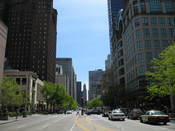History
1820's - Big development in children's apparel, children were dressed like miniature adults
1865 - William Carter Company was found
1906 -The Boy Scout movement was founded in England. The short pants uniform adopted had a powerful influence in replacing knee-pants and long stocking with short pants and knee-socks. The English Scout uniform was adopted around the world, except in America where boys mostly wore knickers.
1917-1918 - Better children clothes were introduced; Standardized children sizing by size and age
1914-18: World War I accelerated many fashion trends already in progress. Knee-pants disappeared only a few years after the War as did Eton collars. Boys no longer were commonly outfitted in dresses after the War. Fauntleroy suits and other fancy styles became less common. Boys after the War wore increasingly simple, practical clothes. Short pants became particularly common, especially in Europe.
1939-45: World War II seems to have had great impacts on boy's clothing, as being the beginning of the end of "traditional" styles.
After the War boys were no longer just boys, but small men and the styles reflect this. Uniforms began to fade. After the end of the war, short trousers began to fade, "T"shirts, jeans, and long trousers took control, as well as the increase in more casual styles. The transition was at first most observable in America, but by the 1950s was evident in Europe as well.
1962: The American public closely follows the hair styles and clothing of a young John F. Kennedy Jr. The bangs and shortfalls worn by the toddler become very popular for younger boys.
1965-73: The Viet Nam War and the youth movement of the 1960s had an enormous impact on boys' fashions. It spawned a rebellion of the young against all things related to the establishment, including the last...


